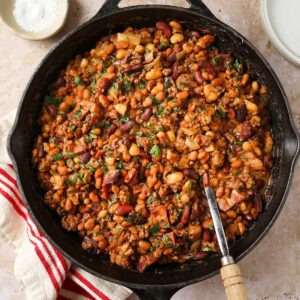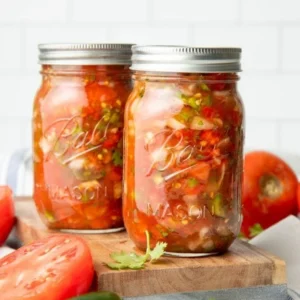Sourdough starter is the foundation of one of the most beloved breads around the world. This natural leavening agent is created through a process that harnesses wild yeast and beneficial bacteria to make bread rise. It’s a slow, but rewarding process that brings a deep, tangy flavor and chewy texture to your sourdough bread. Though it might seem intimidating at first, making your own sourdough starter at home is simple, affordable, and rewarding. This method has been passed down through generations, and making sourdough bread from a homemade starter connects you to a rich culinary tradition.
Ingredients
To create your sourdough starter, you’ll need the following:
- Whole wheat flour: 100g (can substitute with rye flour for a more robust flavor)
- Water (room temperature): 100g
- Filtered water (it’s important to avoid chlorinated water, which can hinder fermentation)
Possible Substitutions:
- If you need a gluten-free starter, substitute the whole wheat flour with a gluten-free flour blend like rice flour or chickpea flour.
- For vegan preferences, simply ensure that all ingredients used are plant-based, which they are in this recipe.
Step-by-Step Cooking Instructions



-
Day 1: Mix Ingredients
In a clean glass jar, combine 100g of whole wheat flour and 100g of filtered water. Stir the mixture until there are no dry patches of flour left. Cover the jar loosely with a cloth or paper towel to allow air to flow, but prevent debris from entering. -
Day 2: Check for Signs of Life
After 24 hours, you might see a few small bubbles starting to form in the mixture. If you don’t, don’t worry—it could take a bit longer. Stir the mixture to incorporate air, and cover loosely again. -
Day 3: Discard and Feed
By the third day, you should start to notice more bubbles. Discard half of the starter (about 100g), and feed the remaining mixture with 100g of water and 100g of flour. Stir well, cover, and let sit for another 24 hours. -
Day 4: Continue Feeding
Continue discarding half and feeding with 100g of flour and 100g of water every 24 hours. You should notice more bubbles and a slight rise in volume. -
Day 5-7: Ready for Baking
After about 5 to 7 days, your sourdough starter should be ready. It should have a pleasant, slightly tangy smell and plenty of bubbles. If the starter passes the “float test” (a small spoonful of starter floats in a glass of water), it’s ready for baking.
Pro Tips and Cooking Techniques
- Maintain the right temperature: Sourdough starter thrives in a warm environment (around 75°F or 24°C). If your kitchen is cold, place the jar near a warm spot like on top of the fridge or in an oven with just the light on.
- Flour choices: Whole wheat or rye flour contains more nutrients that encourage healthy bacterial growth, which is why they work best for starting a sourdough culture. However, you can switch to all-purpose flour after the starter is well-established.
- Patience is key: Don’t rush the process. Every starter is different and can take a bit longer to mature depending on your environment.
Variations and Customizations
- Gluten-Free Sourdough Starter: Use gluten-free flour like brown rice or chickpea flour in place of wheat flour. The process remains the same, but the rise may be slower.
- Whole Wheat Starter: This starter offers a richer, more complex flavor. It’s also more forgiving and faster than starters made with white flour.
Serving Suggestions
- Once your sourdough starter is ready, you can use it to bake a delicious loaf of sourdough bread! Serve it with butter, cheese, or your favorite spreads.
- For a fun twist, try making sourdough pancakes, pizza crust, or sourdough crackers. The possibilities are endless with a healthy, active starter.
Nutritional Information
Sourdough starter itself is mostly composed of flour and water, with minimal calories. The actual nutritional content will depend on the bread or baked goods you make with it. However, here is an estimate per serving for the starter:
- Calories: ~50 calories per 1/4 cup serving of sourdough starter
- Protein: ~1g
- Carbohydrates: ~10g
- Fat: ~0g
Frequently Asked Questions (FAQs)
1. How do I store my sourdough starter?
You can store your starter in the fridge once it’s fully mature. Be sure to feed it at least once a week, discarding half and refreshing with flour and water.
2. Can I freeze my sourdough starter?
Yes, you can freeze your starter. Just make sure to feed it before freezing. When you’re ready to use it, thaw it and feed it a few times before baking.
3. What do I do if my starter doesn’t bubble?
If you don’t see bubbles after 3 days, try moving it to a warmer spot, or feed it more frequently. Be patient—it can take longer, especially in cooler environments.
Making your own sourdough starter is a deeply satisfying process that brings the flavors and traditions of artisan baking into your home. You’ll have the satisfaction of nurturing your own starter and using it to create incredible homemade bread. It may take time and attention, but the reward is well worth it. Get started today and share your sourdough journey with us!



